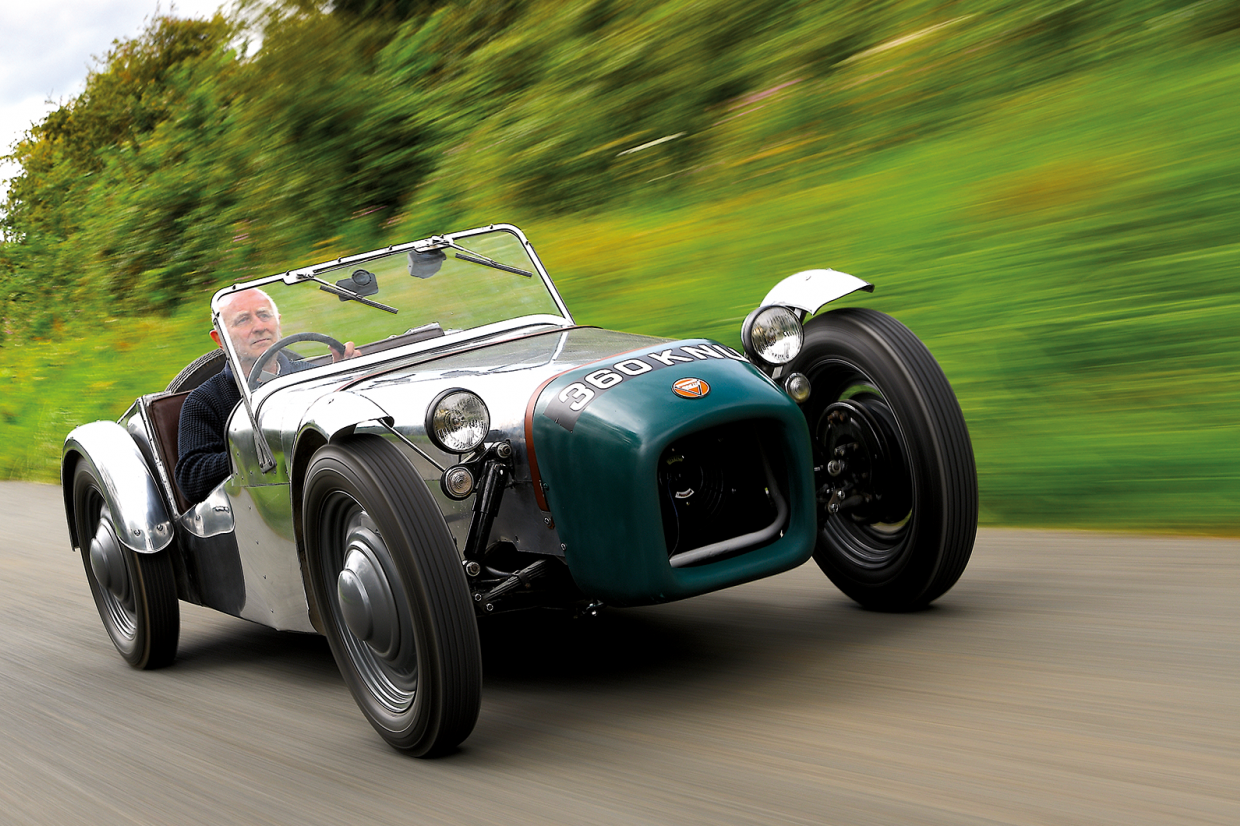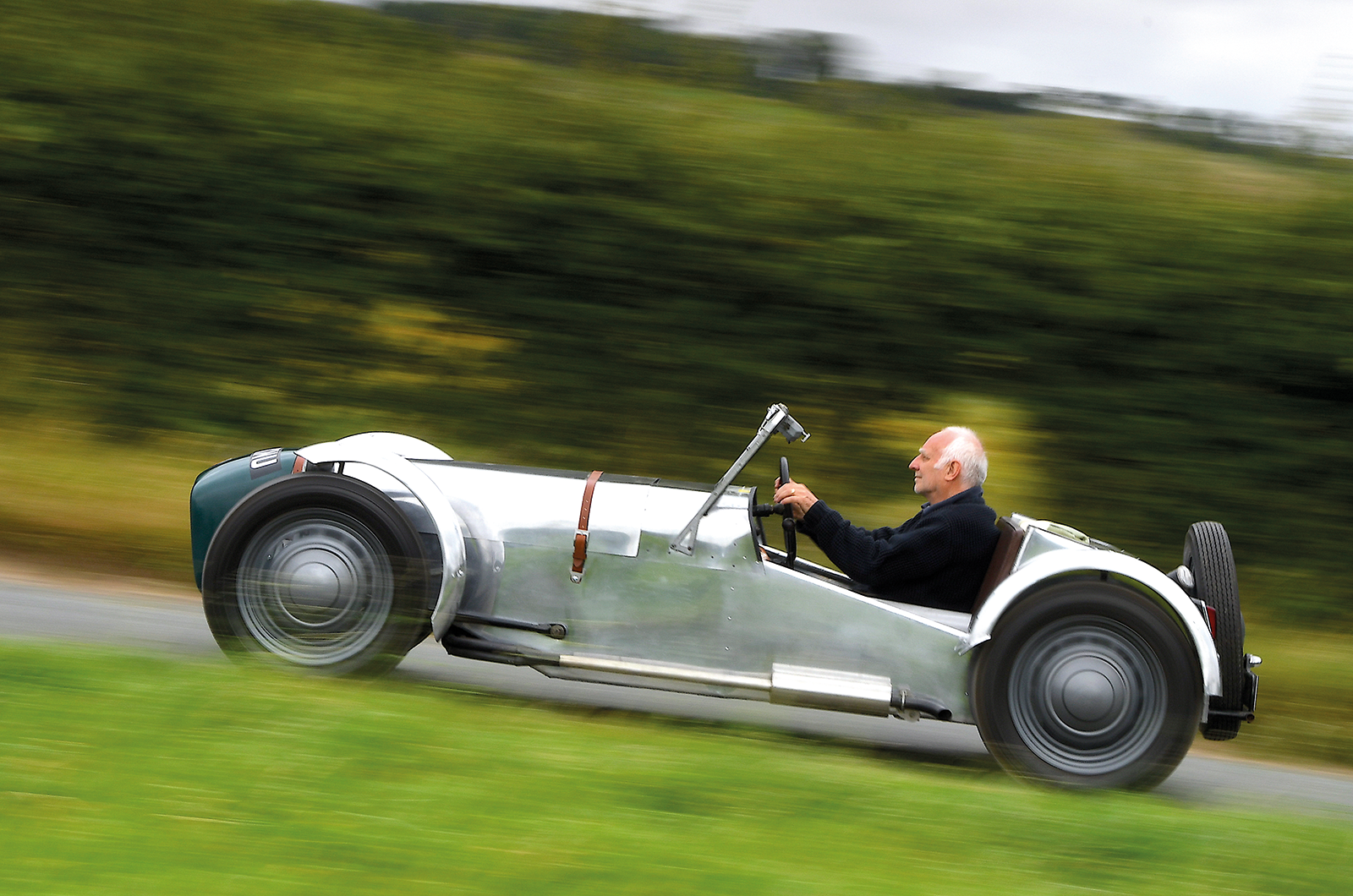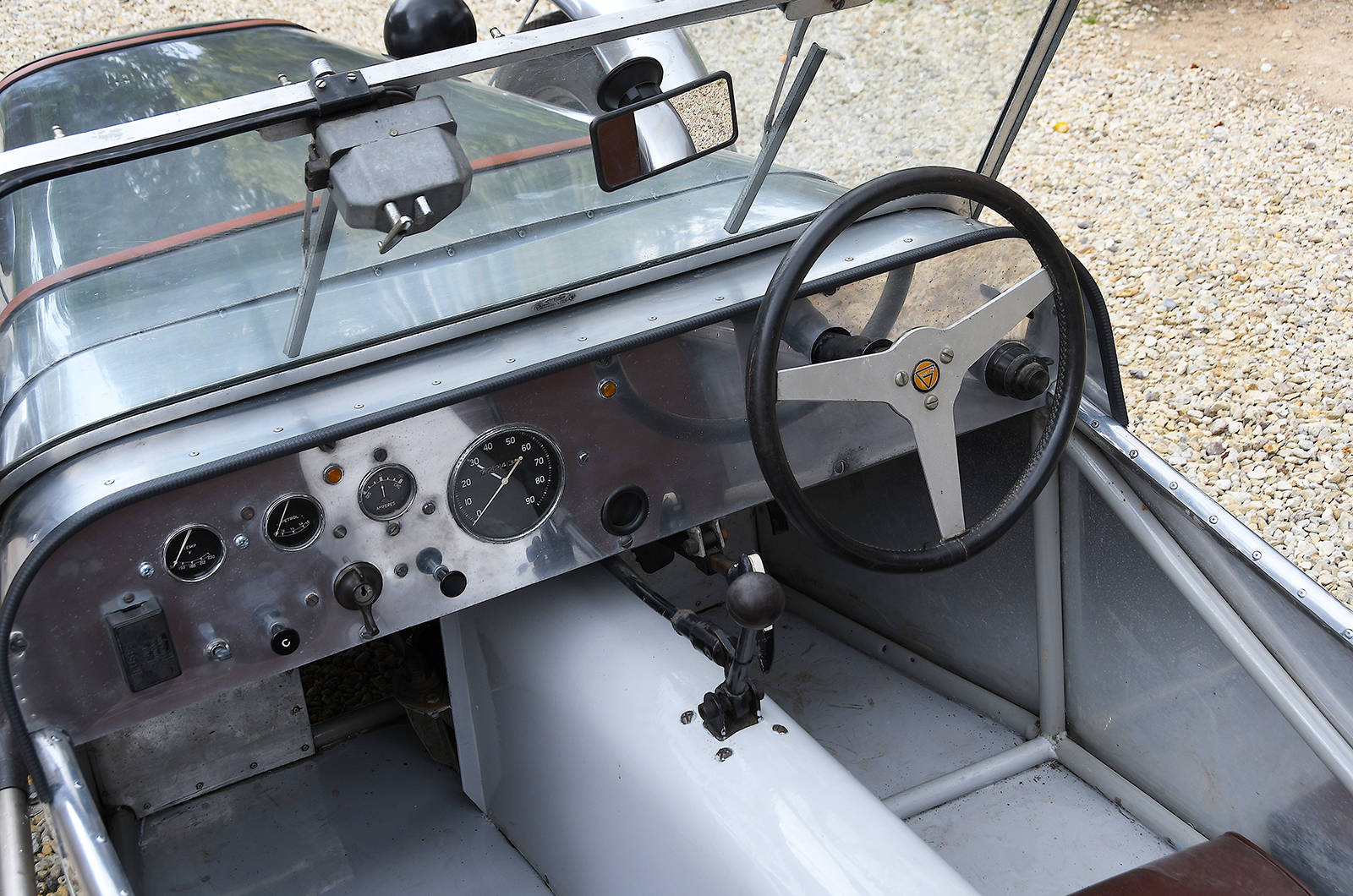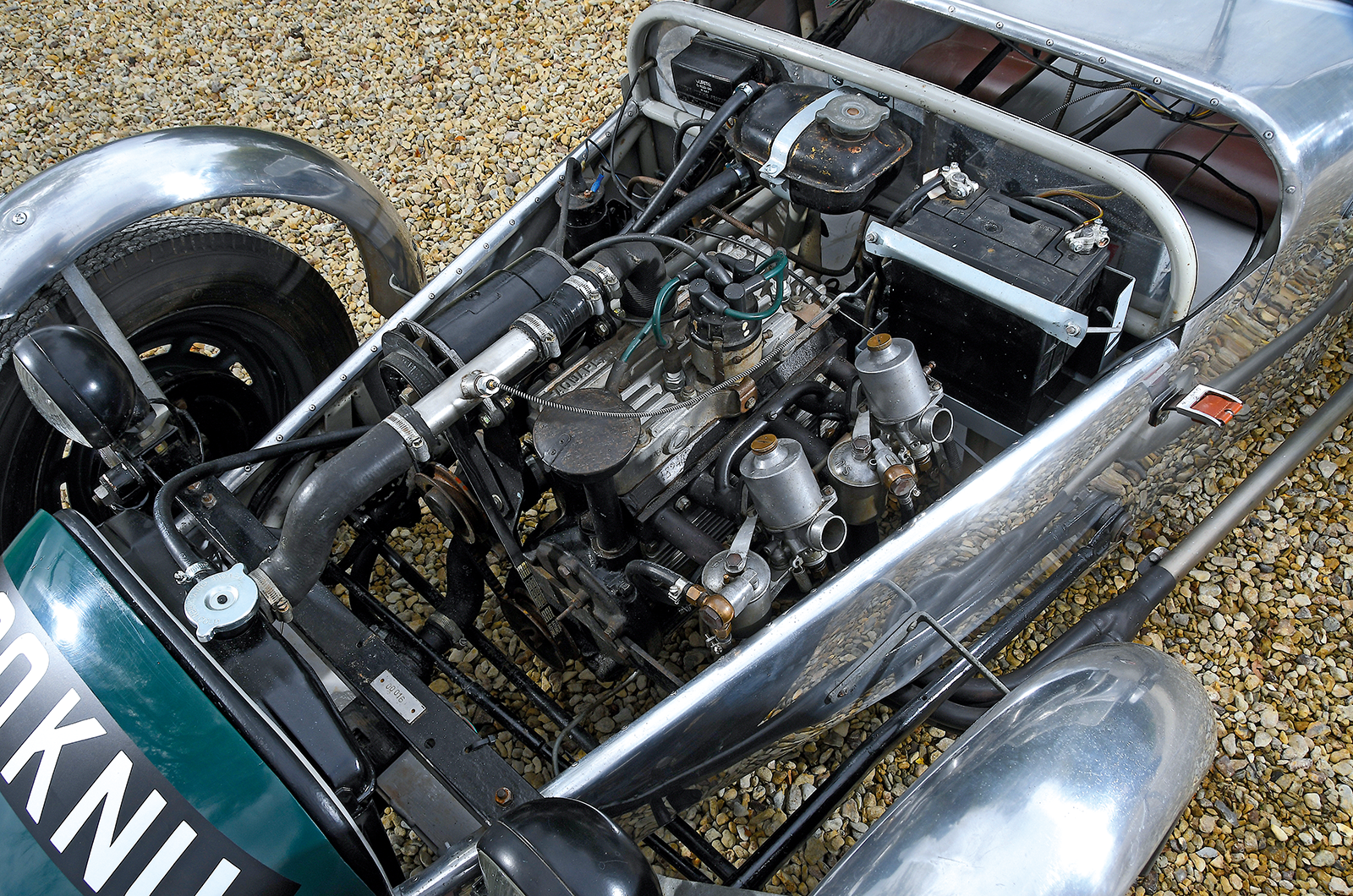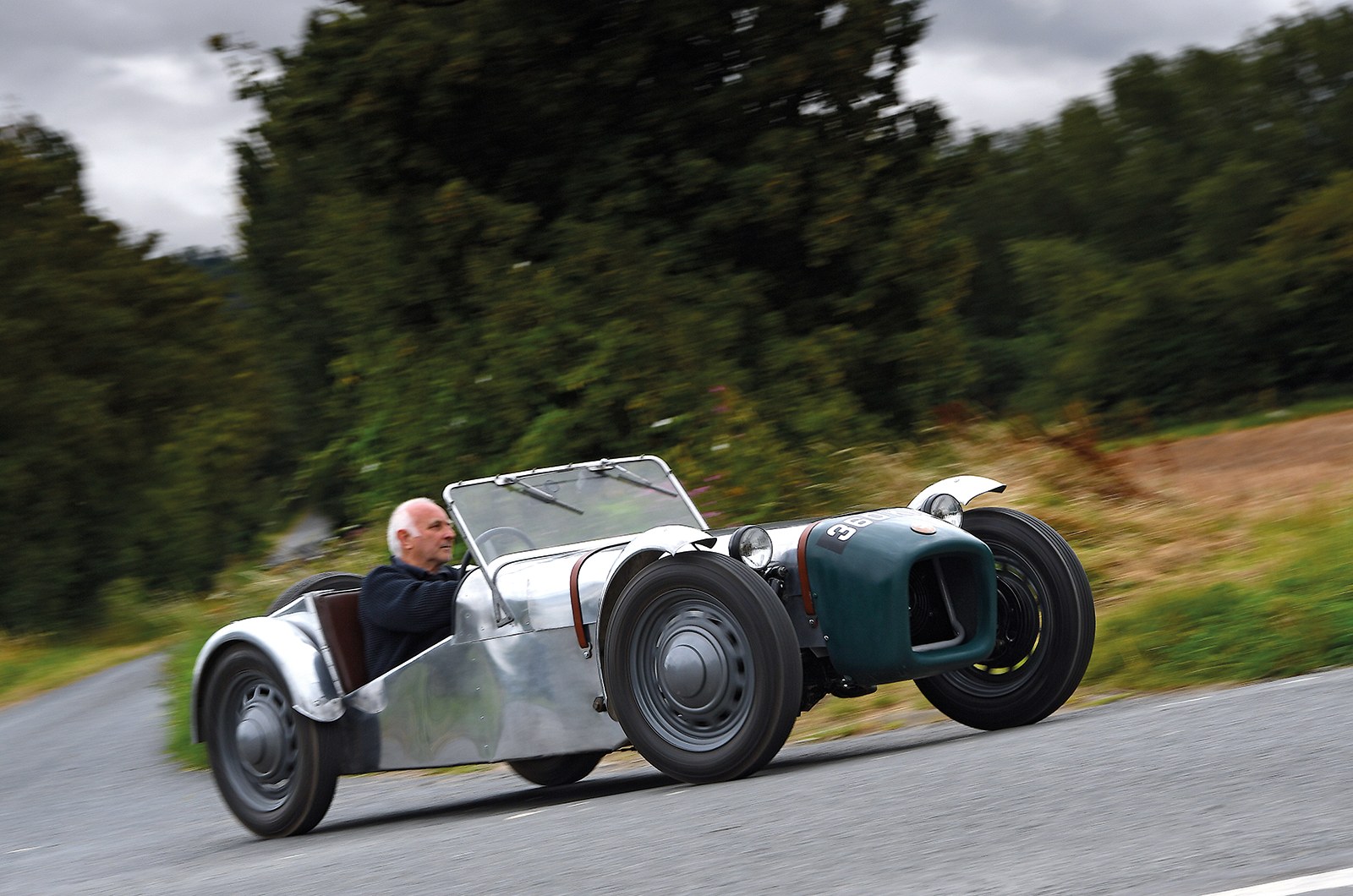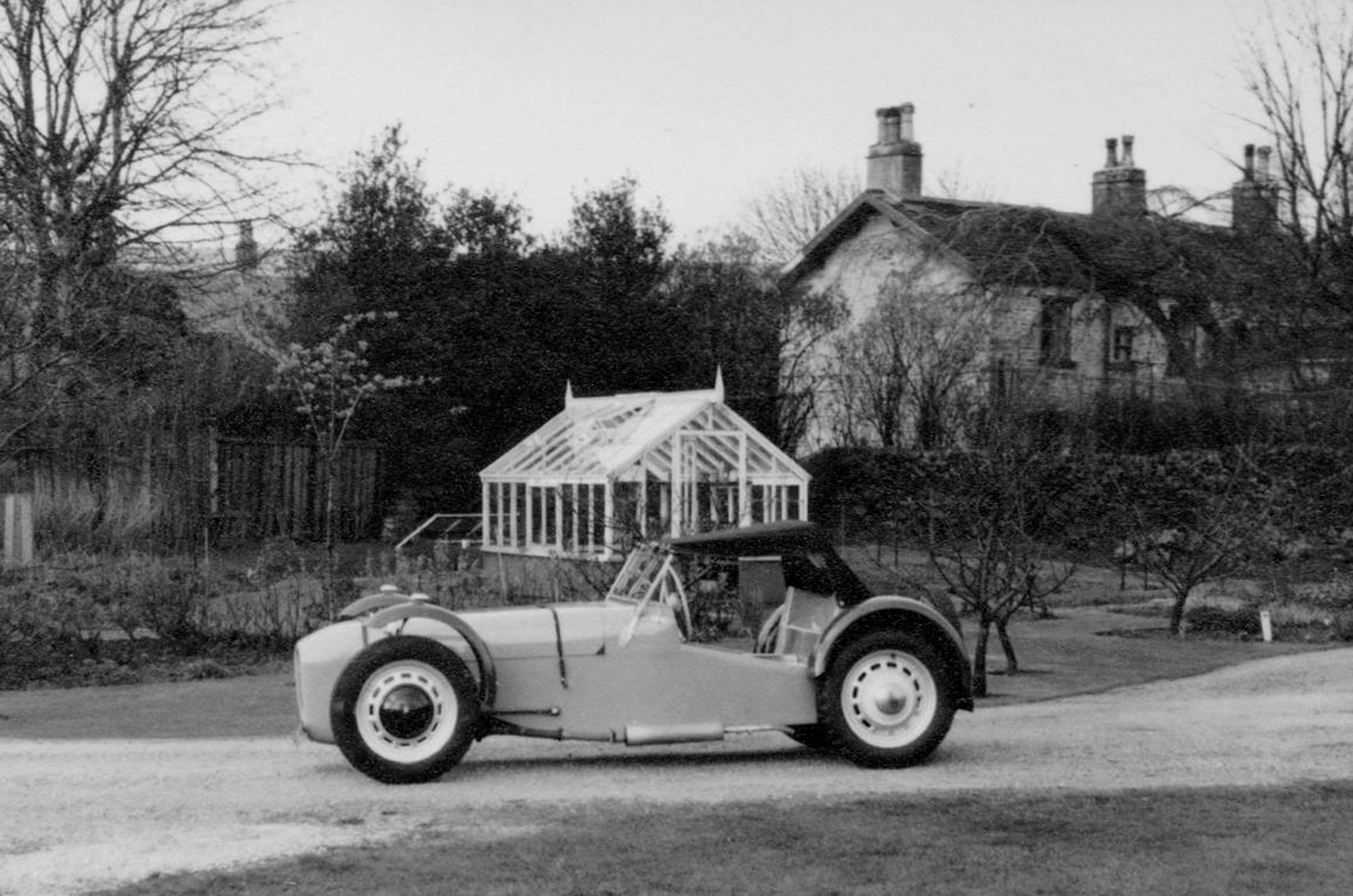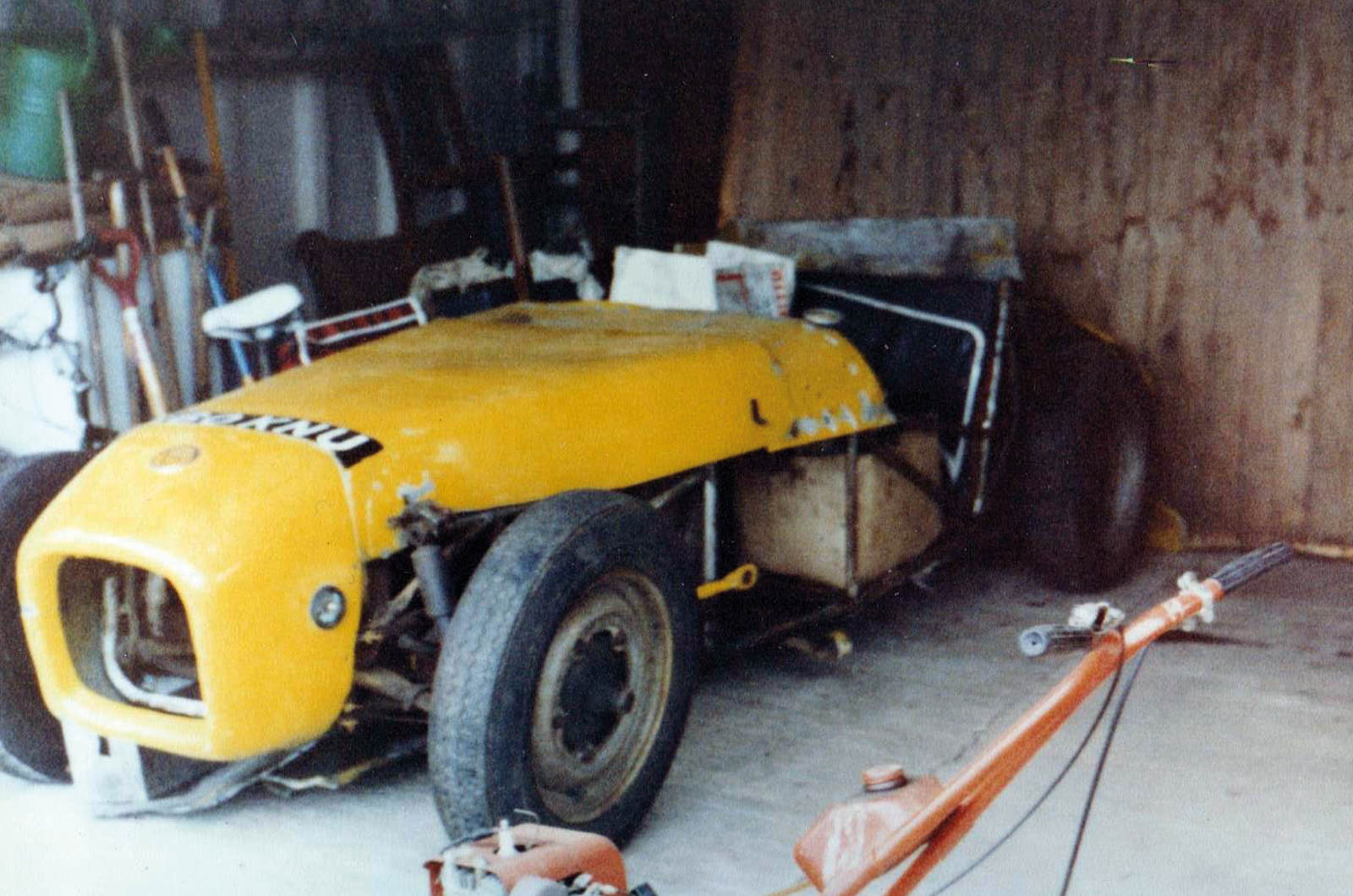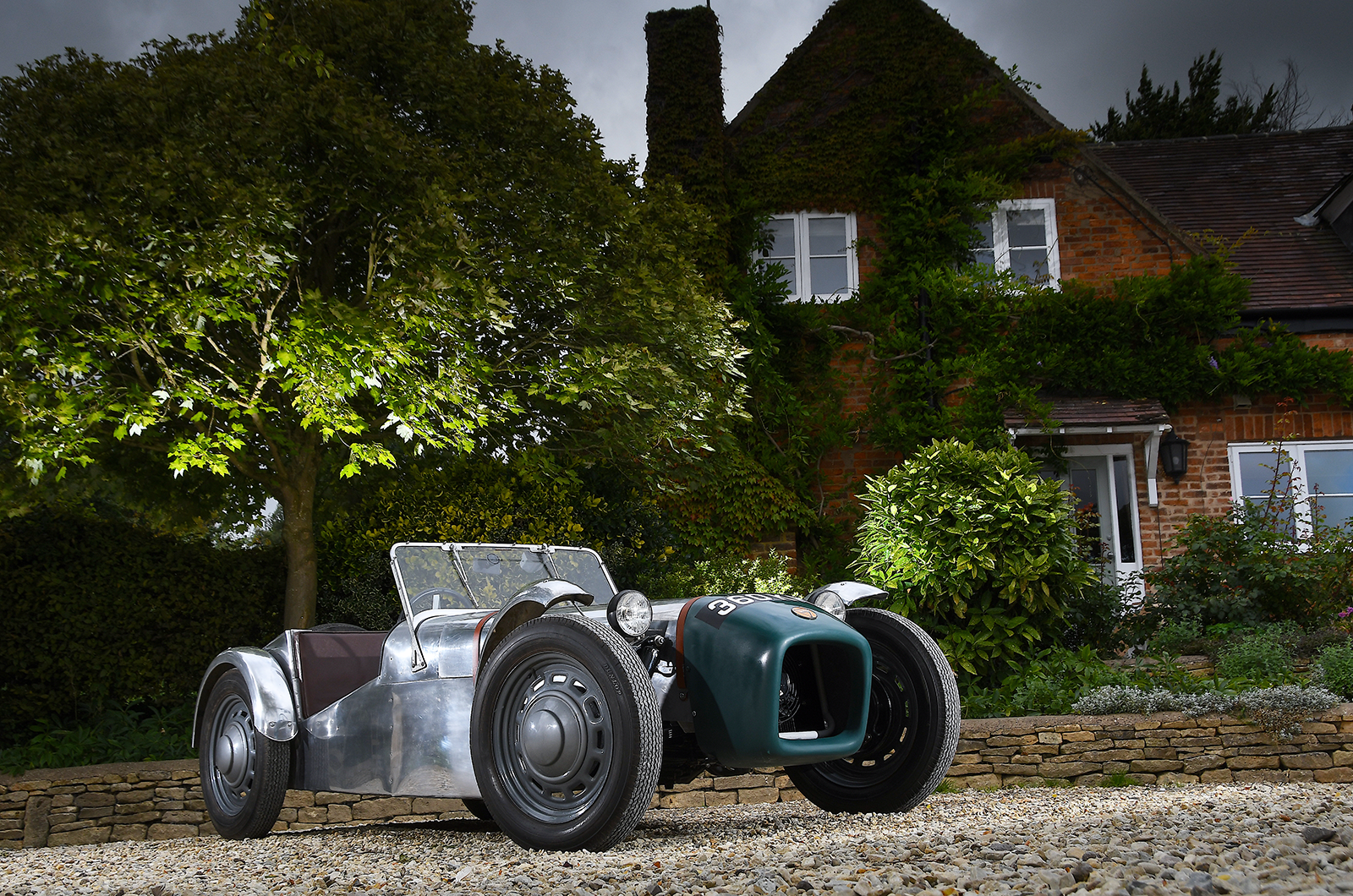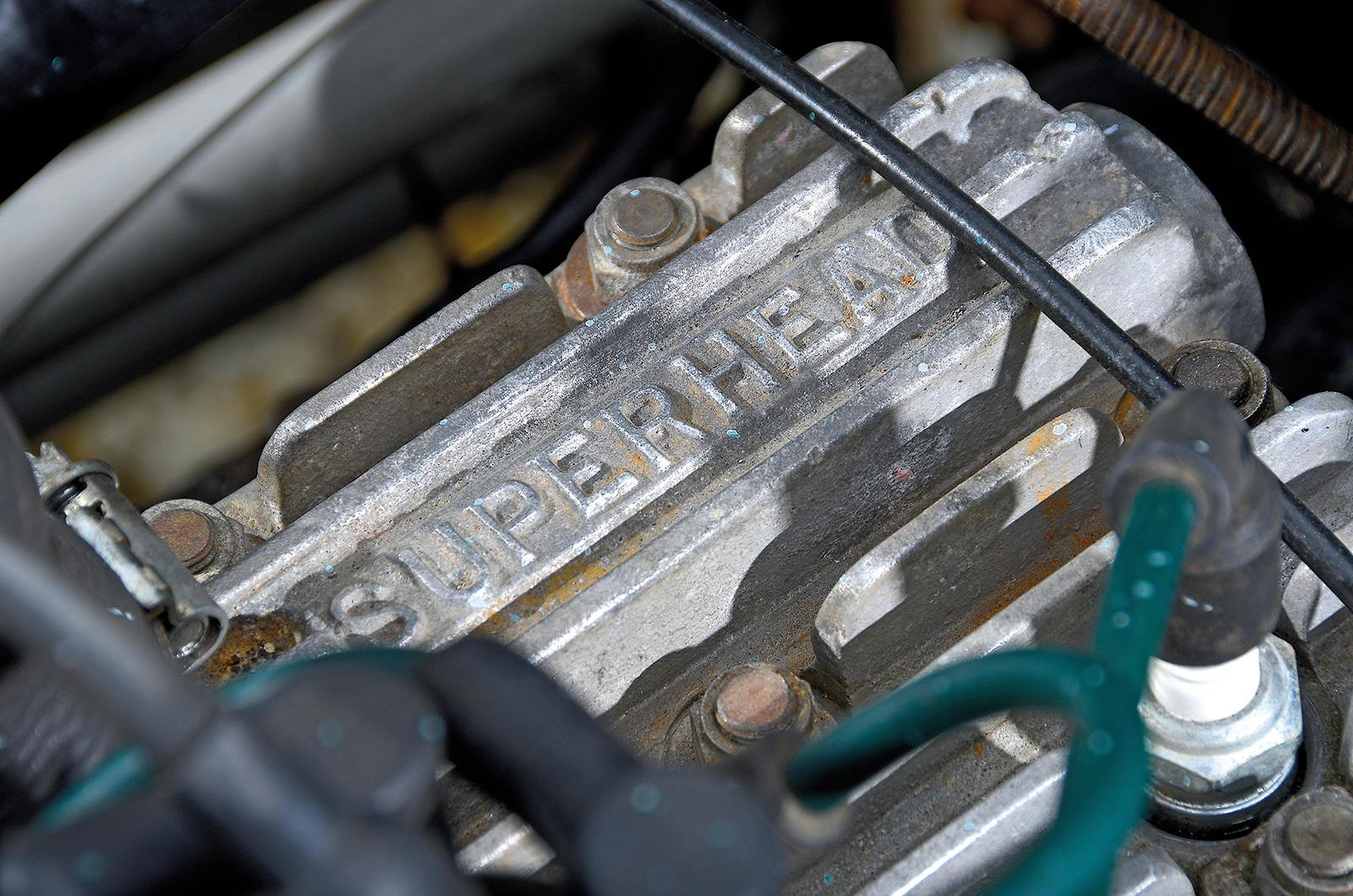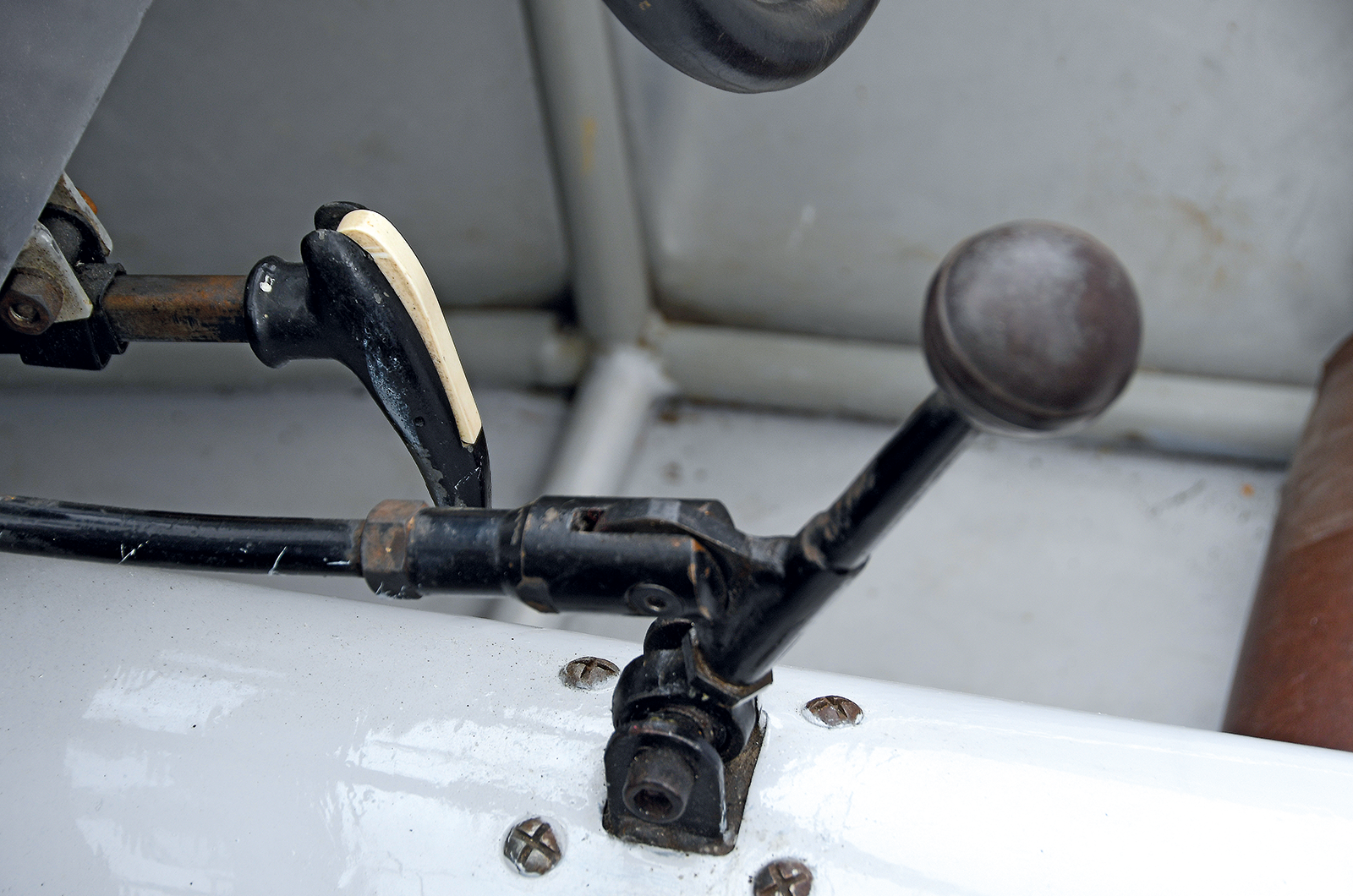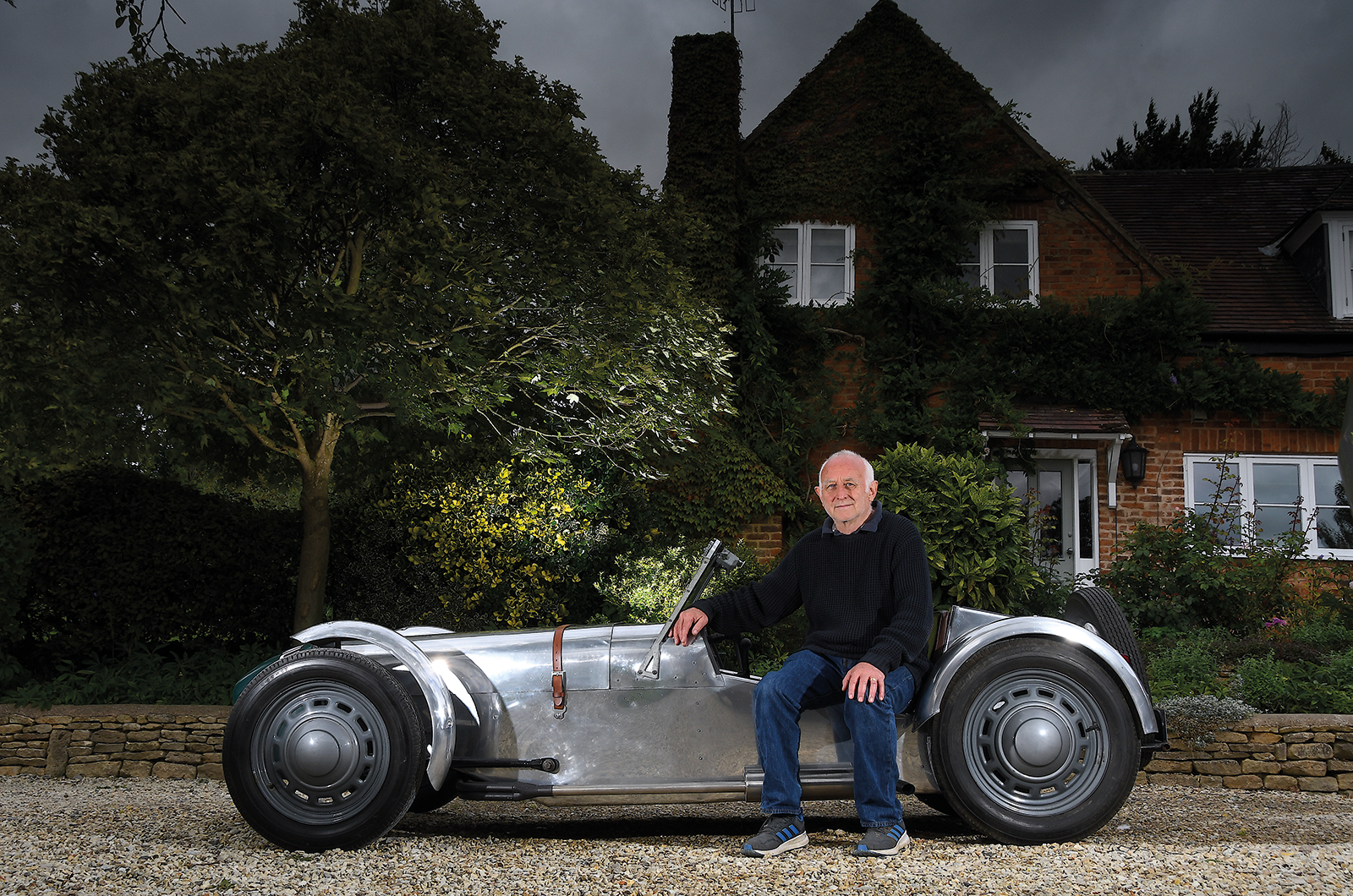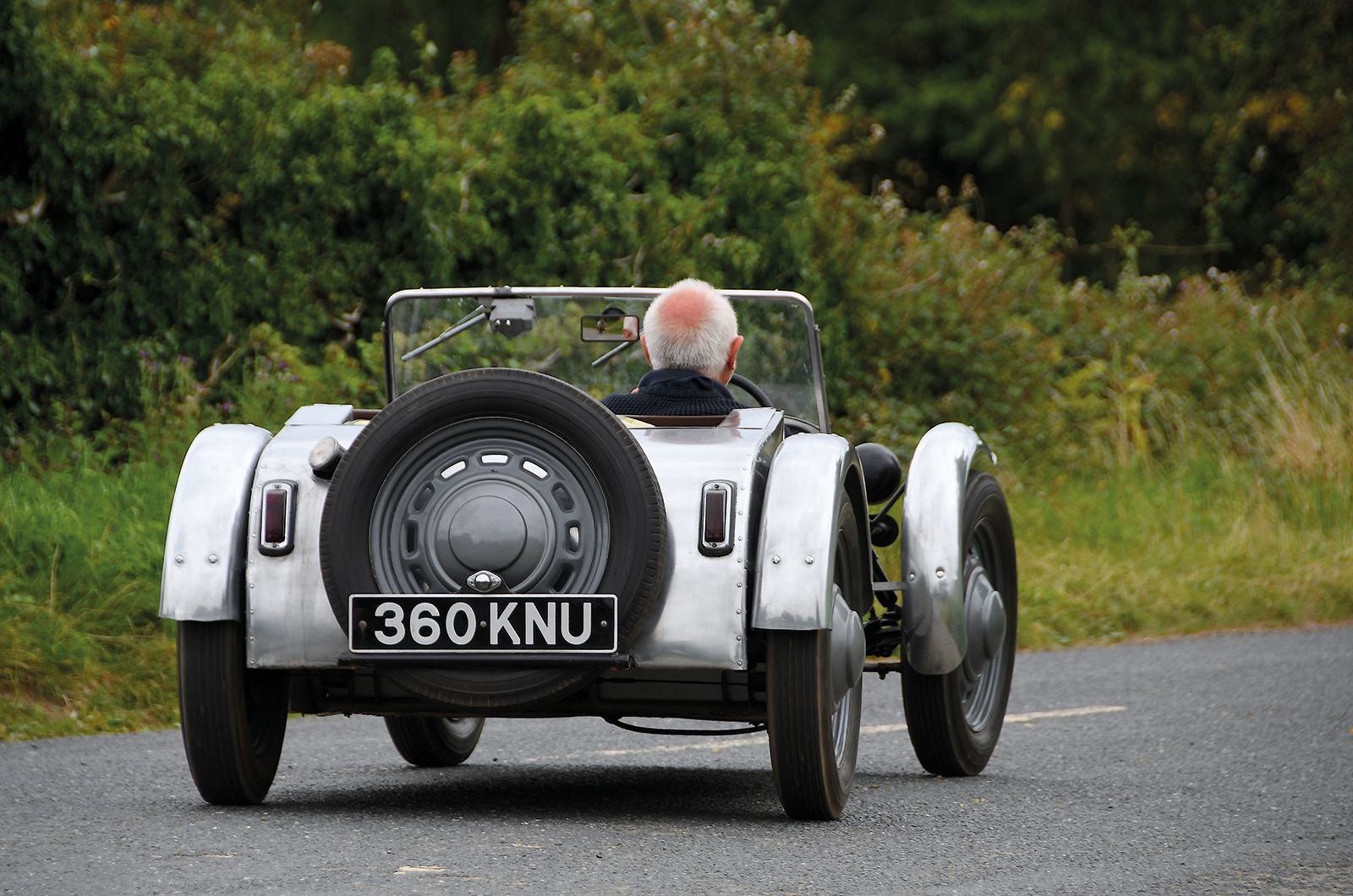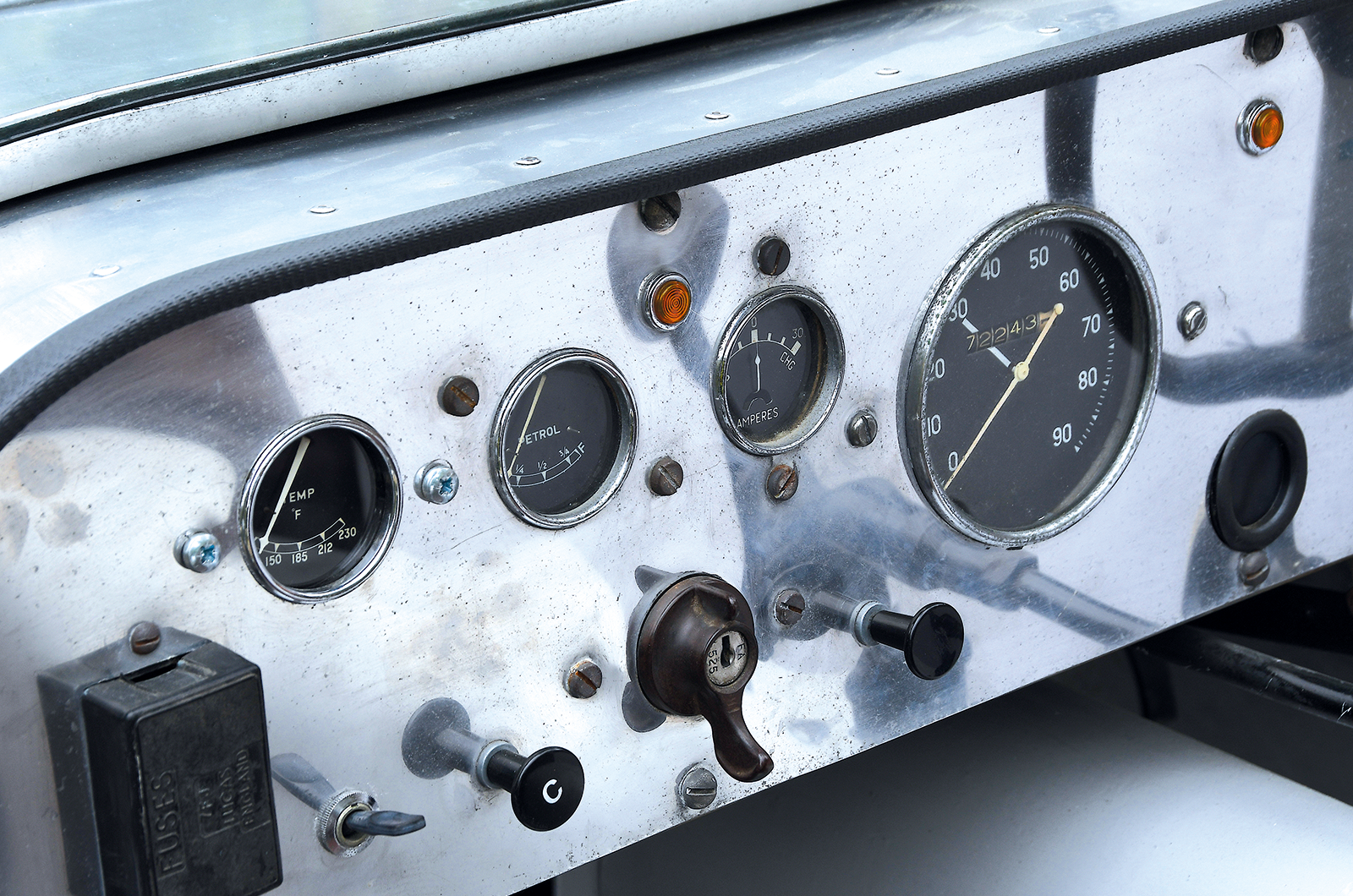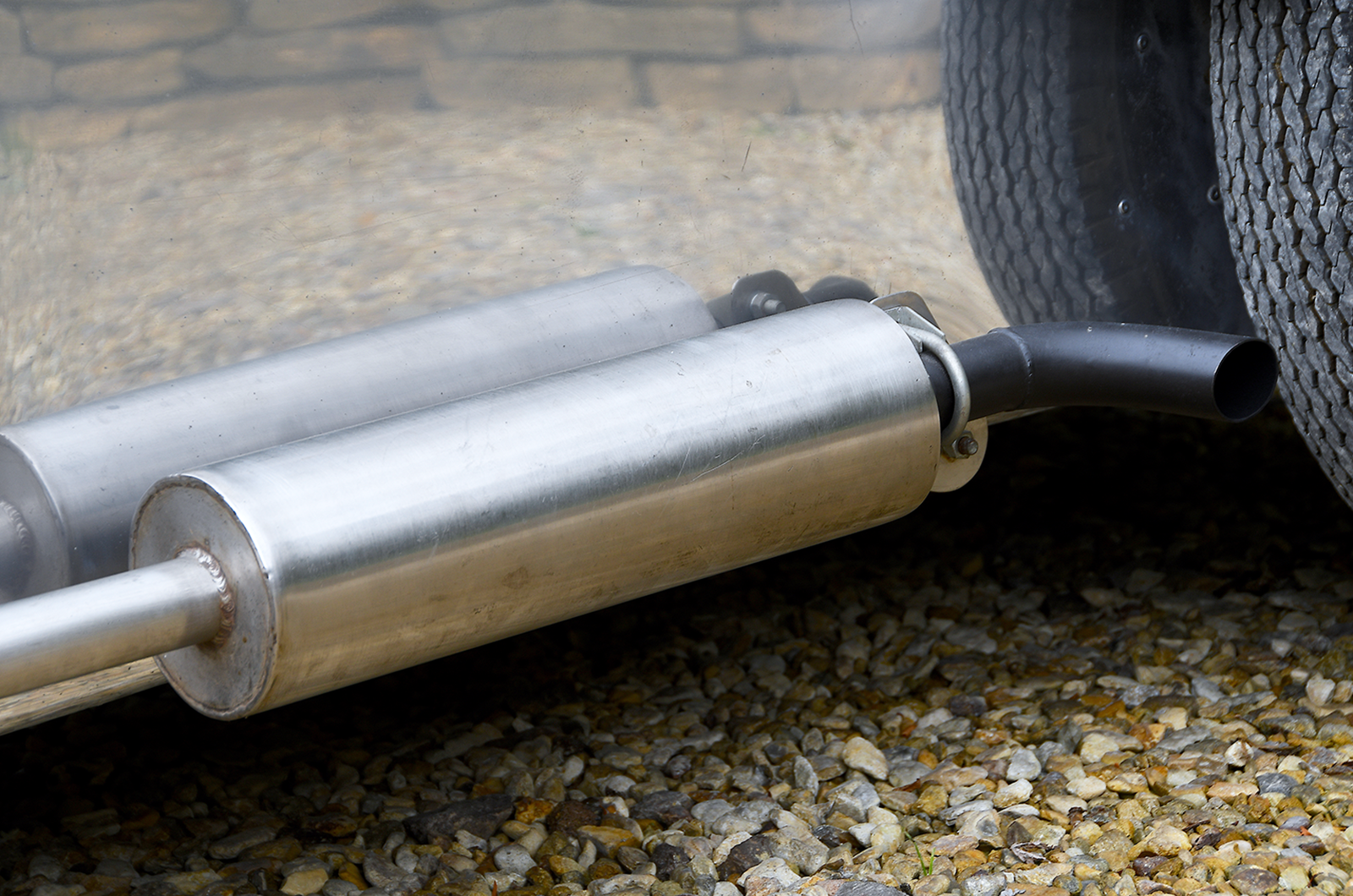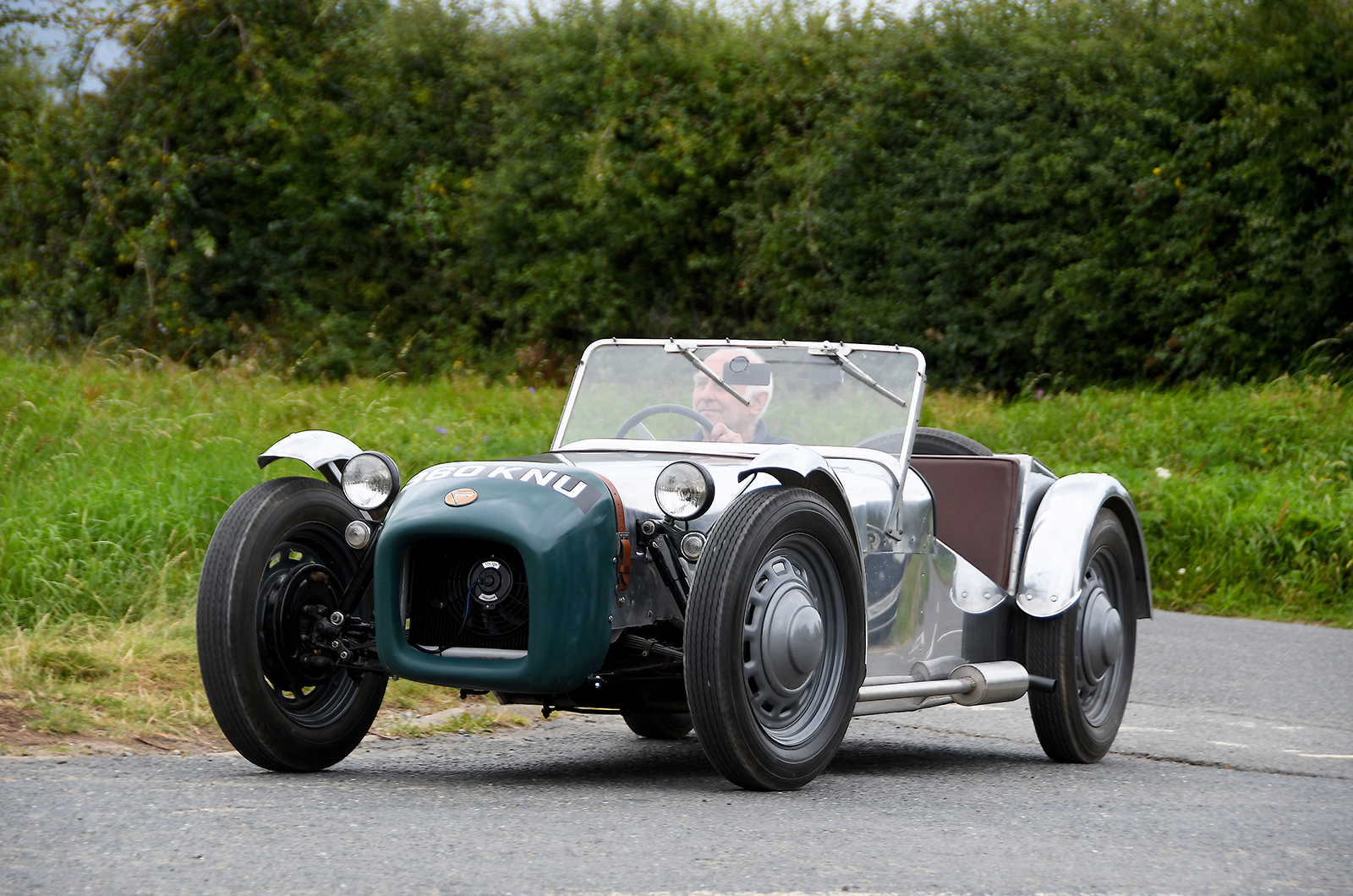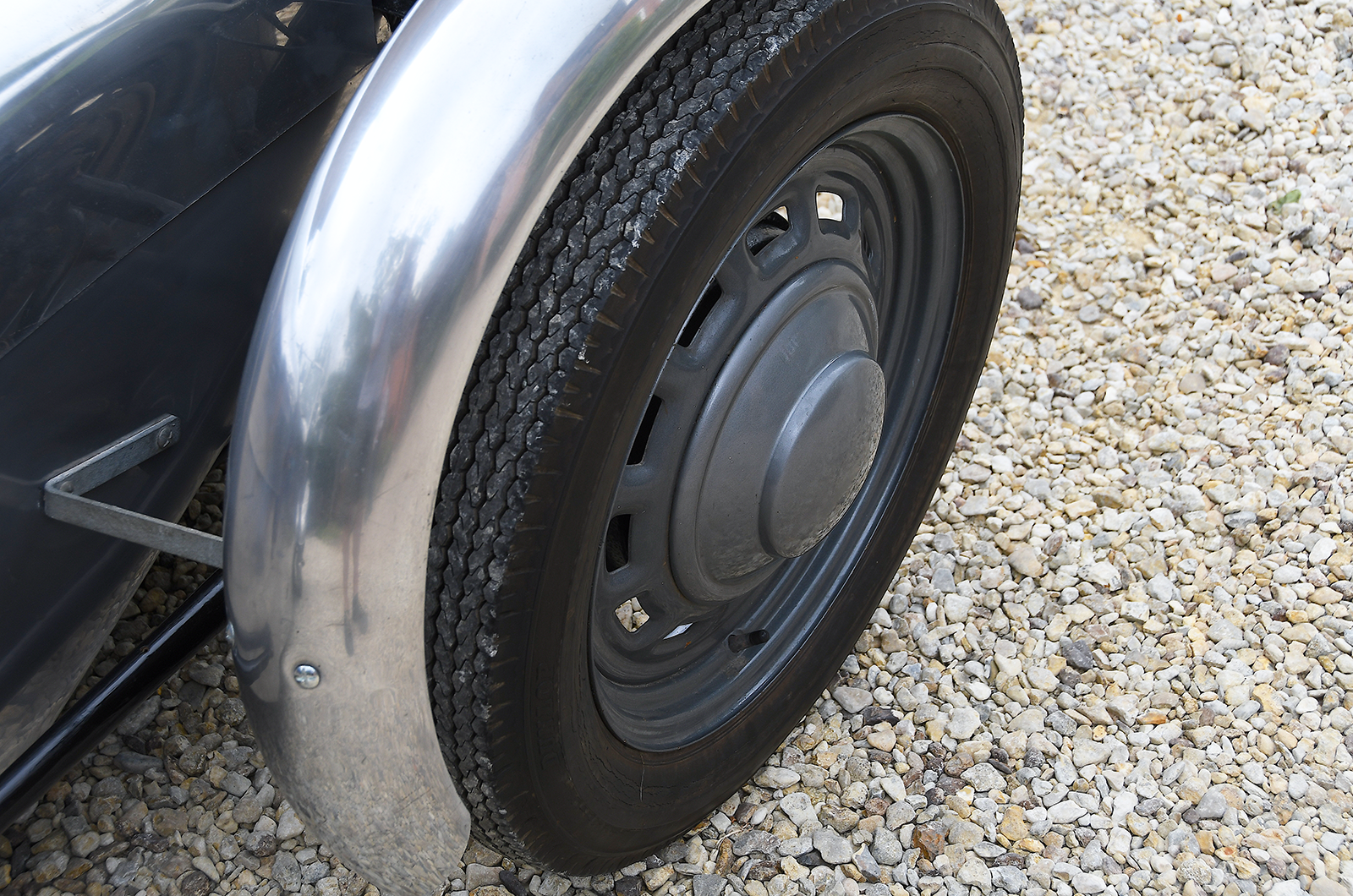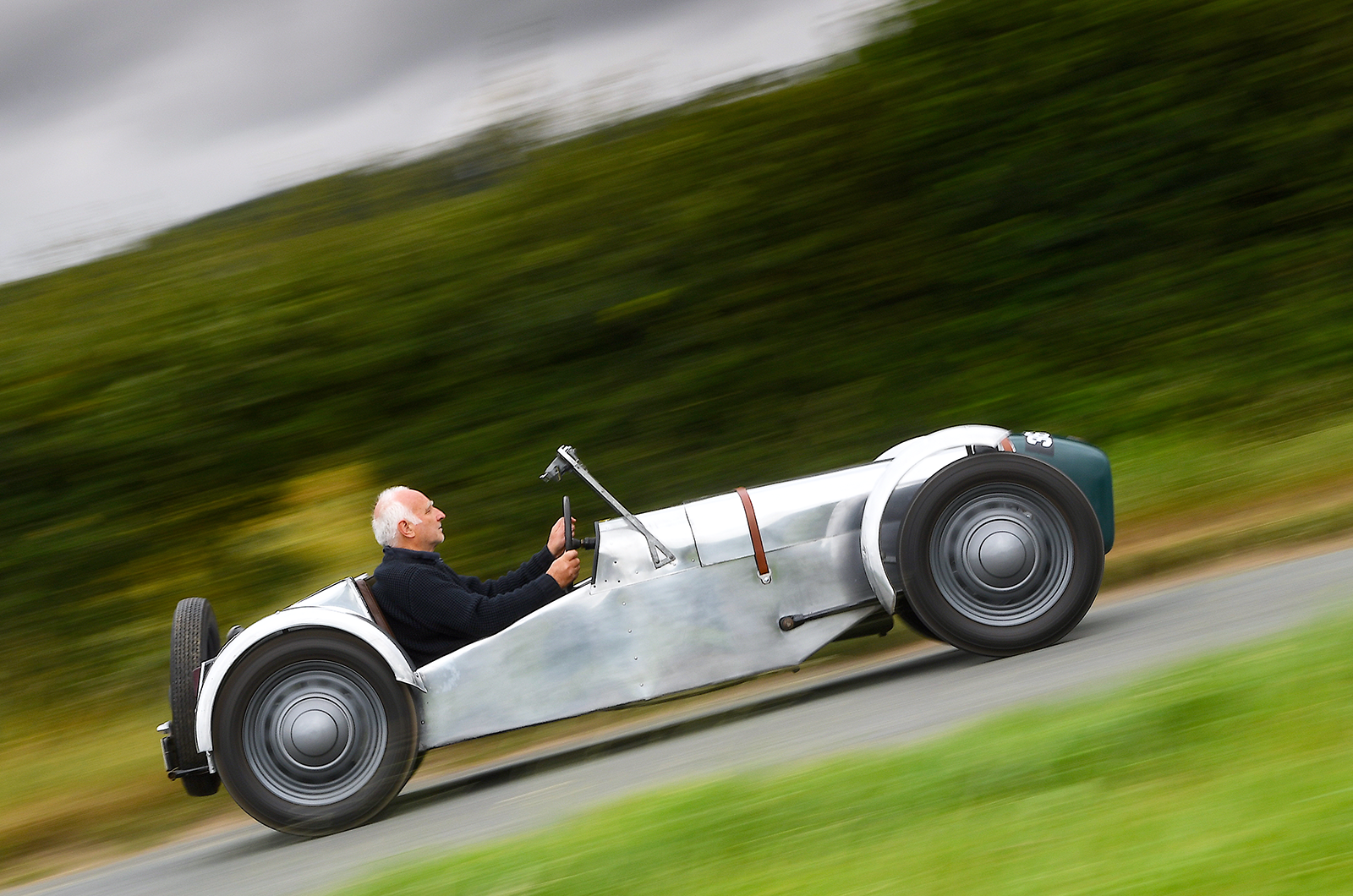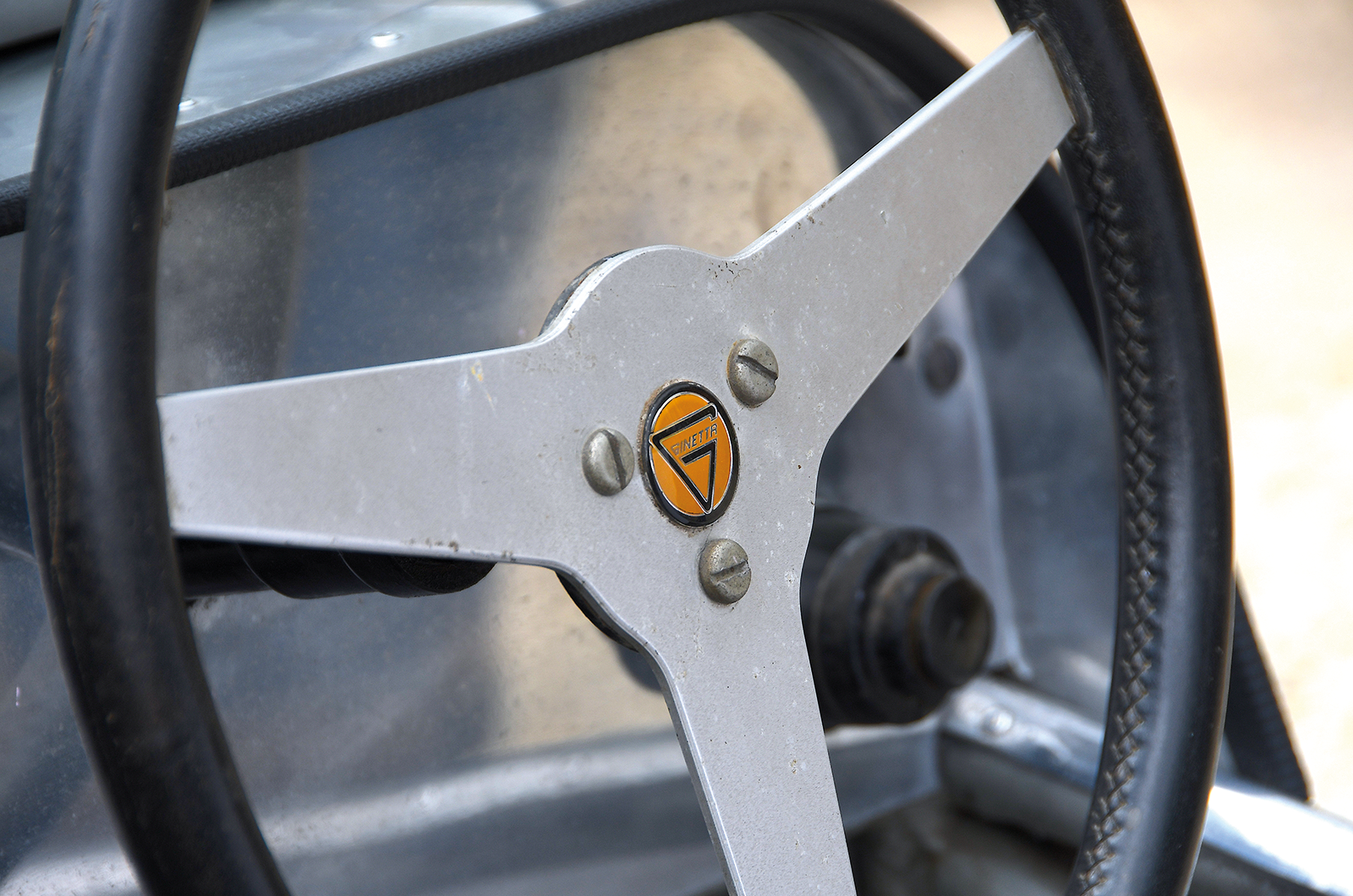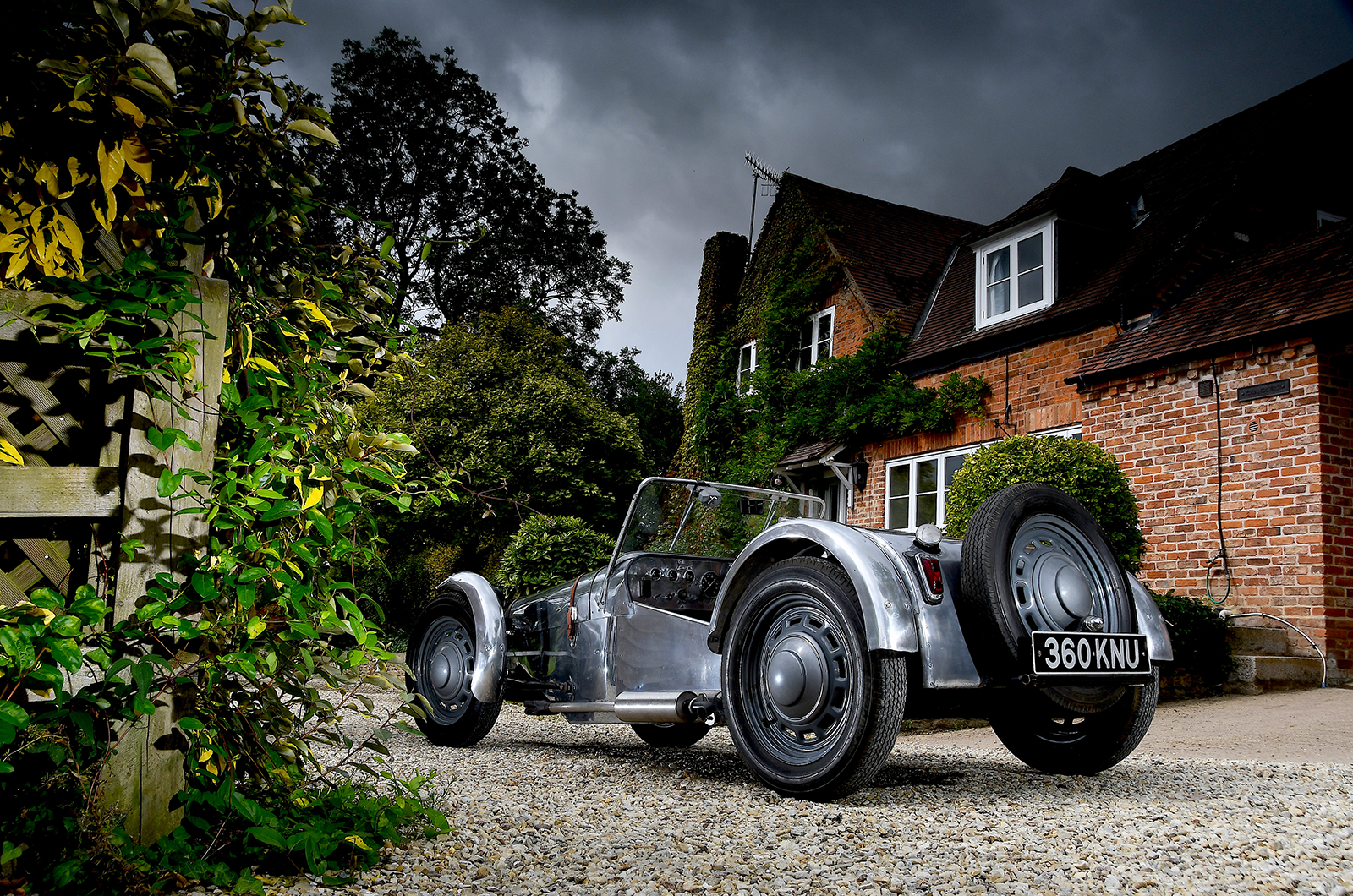It fell to Davis to return the car’s spaceframe to its original configuration.
Given that he has made chassis for everything from the William Towns Microdot concept car to sports-racers, that should have been no great hardship.
However, there was no similar car to compare it to or drawings to work from. Nevertheless, he resisted the temptation to go his own way, being determined to rebuild it to how it appeared in the late 1950s.
The finished article was then coated in Tekaloid coach paint, just as Ginetta supplied frames to customers in period.
This Ginetta’s tall wheels are from a Ford Pop
Meanwhile, a decrepit Ford E93A was purchased and relieved of its running gear, each part being rebuilt before being transposed.
The 1172cc engine was treated to twin SU carbs and a four-branch exhaust manifold in addition to a raft of period aftermarket equipment.
This stretched to an Aquaplane cylinder head, water pump, engine mounting bracket and valve-chest cover.
The body, meanwhile, was fashioned by Collins and Davis. Given that so little of the original coachwork remained unmodified, they didn’t have much to go on until the rolling chassis was spotted at an event by its original builder.
Jeffreys had a rummage in his loft and found several snapshots from the late 1950s, which showed it from various angles.
The Ginetta G2 was rare even when new – today it is all but unknown
By the end of the ’80s, the G2 was virtually complete and sitting on a set of enamelled 17in Ford Pop wheels.
It was almost ready to hit the road, but was instead placed under a dustsheet.
Following much prompting from the owners’ club, Collins and Davis were persuaded to finish the plumbing and wiring to display it at a kit car show in 1996.
Ivor and Trevers Walklett, the original design team, enthused over the G2 but pointed out one detail that wasn’t quite right: the colour of the badge on the nose.
The steering wheel has a pleasingly simple three-spoke design
Save the lightest of use, which consisted of little more than a few local jaunts, the car was placed in storage again, sometimes outdoors.
It was disinterred long enough for an attempt at an MCC trial in the MendipHills, during which it suffered from chronic overheating, before returning to hibernation.
Fast-forward to 2020, however, and the various lockdown periods provided a spur for Collins to revive the Ginetta while Davis was away in France.
One of the main jobs was changing the front suspension set-up. When acquired, the car was equipped with an aftermarket Stanley Beardsell & Co split-beam arrangement. This was deemed to be borderline lethal so it was replaced with a solid Pop beam axle. Once the caster angle was sorted, it transformed the handling.
This Ginetta G2 has finally been finished, thanks to lockdown
So much about the G2 appeals.
It represents the period when Britain’s cottage industry of specialist car manufacturers was born; one when a lack of money was not necessarily a barrier to success. If anything, it spurred creativity.
The first Ginetta didn’t break moulds or push envelopes, but it wasn’t without influence, even if it was only on those who made it.
Images: John Bradshaw
READ MORE
21 classic great British kit cars
10 top glassfibre classic sports cars
The HRG 1500 that has finally come full circle
Lombardi Grand Prix: supercar in miniature
Richard Heseltine
Richard Heseltine is a long-time contributor to Classic & Sports Car
